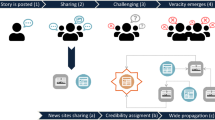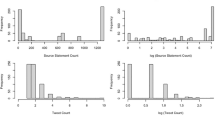Abstract
This paper explores the impact of new information technologies on the development of social communication and social systems. The properties and features of the modern information environment are analyzed. The factors and technologies of information warfare and confrontation are investigated. The role of information communication technologies in the operation of social-network movements is demonstrated. The means and methods of the mass media, social networks, and destructive network technologies that are applied to manipulate group behavior and to transform public opinion are exposed. The potential of sociodynamics as a new instrument of targeted impact on social systems is explored. Possible risks and threats that face the development of telecommunication systems and networks are assessed. Conclusions and relevant activities are formulated to prevent the rise of information confrontations and to mitigate hidden impacts and threats to the country’s social-economic, scientific, and technological development.
Similar content being viewed by others
References
Smolyan, G.L., Network information technologies and problems of personal security, Vestn. RFFI, 1999, no. 3 (17), pp. 63–68.
Rashkoff, D., Mediavirus (Mediavirus), Moscow: Ul’trakul’tura, 2003.
Siountiourenko, O., The problems of providing information security: The case of information infrastructure, in Studies in Eastern Europe. Technological and Environmental Policy, Banse, G., Berlin, 2007, pp. 163–178.
Stigler, B., Individuation and mass consumption. http://wwws357ablogspotcom/2012/05/blog-posthtml.
50 facts on Twitter everybody interested in. http:// wwwtwittru/twitter-tips/50-factshtml
Gart, B.L., Strategiya nepryamykh deistvii (Strategy of Indirect Actions), Moscow: Eksmo, Midgard, 2008.
Dugin, A.G., Network-centric warfare. New theory of war, in Setevye voiny. Ugrozy novogo pokoleniya (Network Wars. Threats of a New Generation), Moscow, 2009.
Dement’ev, I.O., Intellectualization of global telecommunication systems using semantic networks, Iskusstvennyi intellekt: Filosofiya, metodologiya, innovatsii: Materialy 3-i Vserossiiskoi konferentsii studentov, aspirantov i molodykh uchenykh MIREA (Artificial Intelligence: Philosophy, Methodology, Innovations: Proc. 3rd All-Russian Conf. of Students, Graduate Students and Young Scientists of MIREA), Moscow, 2009, pp. 103–104.
Vasenin, V.A., Critical energy infrastructure: Cyberterrorist threat and counteraction means, Inf. Tekhnol., 2009, no. 9, pp. 3–35.
Loginov, E.L., New information technologies for control activities in the field of public and corporate governance, Inf. O-vo, 2011, no. 6, pp. 32–39.
Stigler, B., Individuation and mass consumption. http://wwws357ablogspotcom/2012/05/blog-posthtml.
Systems thinking and future studies (Systems Thinking, Ontario, 2013-03-21). http://wwwcoevolvingcom/ blogs/indexphp/archive/systems-thinking-and-futuresstudies-systems-thinking-ontario-2013-02-21/.
Gorokhov, V.G. and Syuntyurenko, O.V., Technological risks: Information aspects of society security, Program. Sist. Vychisl. Metody, 2013, no. 4(5), pp. 344–353.
Siountiourenko, O. V., Macroproblems of the information security of man and society, Sci. Tech. Inf. Process., 2013, vol. 40, no. 2, pp. 97–100.
Mayer-Schönberger, V. and Cukier, K., Big Data: A Revolution That Will Transform How We Live, Work, and Think, Eamon Dolan/Mariner Books, 2014.
Korovin, V.M., Tret’ya mirovaya setevaya voina (Third World Network War), St. Petersburg: Piter, 2014.
Larina, E.S. and Ovchinskii, V.S., Kibervoiny XXI veka. O chem umolchal Edvard Snouden (Cyberwars of the 21st century. What did Edward Snowden keep silent about), Moscow: Knizhnyi mir, 2014.
Speech of V.V. Putin at the board meeting of the Federal Security Service on March 26, 2015. http://kremlinru/news/47963.
Syuntyurenko, O.V., The digital environment: The trends and risks of development, Sci. Tech. Inf. Process., 2015, vol. 42, no. 1, pp. 24–29.
US information forces are introduced to the Russian social networks, Izvestiya, no. 96, April 14, 2015. https://newsmailru/politics/21711516/?frommail=1.
Russia and China signed an agreement on information security, RIA Novosti, May 8, 2015. http//riaru/defense. safety/20150508/1063359829html/.
Author information
Authors and Affiliations
Corresponding author
Additional information
Original Russian Text © O.V. Syuntyurenko, 2015, published in Nauchno-Technicheskaya Informatsiya, Seriya 1, 2015, No. 10, pp. 1–7.
About this article
Cite this article
Syuntyurenko, O.V. Network technologies for information warfare and manipulation of public opinion. Sci. Tech.Inf. Proc. 42, 205–210 (2015). https://doi.org/10.3103/S014768821504005X
Received:
Published:
Issue Date:
DOI: https://doi.org/10.3103/S014768821504005X




